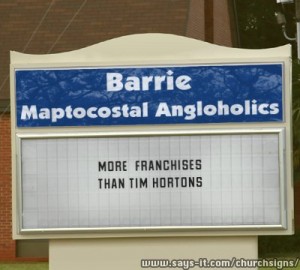
image courtesy of http://www.flickr.com/photos/gideon/
Another tricky one today. One time when I entered Canada I was asked whether I had ‘ever been affiliated with an organization that used violence to achieve political goals.’
I was very tempted to say ‘yes, I’m a British Citizen.’
I doubt that an immigration desk is the right place to have a detailed philosophical discussion about if and when it is acceptable to use violence to further political aims. A border agent probably isn’t that interested in debating Just War theory, or pacifism, or the culpability of the citizen for the actions of the state, or Weber’s idea’s of the Monopoly on Violence.
However, this blog is exactly the right place to have that discussion.
So, when is it justifiable for one group to kill people for political reasons? Karl van Clausewitz said that “War is the continuation of policy by other means”, and then spent 10 (surprisingly readable) volumes discussing the best ways of conducting war. But he only considered the actions of nation-states. In today’s world we have national armies, but also private security outfits, militant groups, and indeed lone individuals, all of whom have both political goals and the ability and motivation to harm others in order to achieve them.
Even categorizing these groups presents difficulties. In Iraq, anti-government forces tend to be known as ‘insurgents.’ In Libya, anti-government forces are referred to as ‘rebels.’ Members of the African National Congress, such as Nelson Mandela, were referred to variously as revolutionaries, militants, freedom fighters and terrorists. Even the language that we use carries a heavy weight of implied judgement, making it hard to objectively consider when and where violence may be justifiable.
So, is it acceptable for one nation to invade another to acquire resources, or perhaps in pre-emptive defence? Is it OK to bomb or shoot a corrupt dictator? If so, must the killer be part of an organized national army, or a distinct political group, or does the rightness of the cause permit a lone actor to take matters into their own hands? What about the use of violence against citizens, or ideological groups, or criminals?
And if we can answer these questions, can we then mold them into a cohesive theory that applies both to the actions of the state but also to the responsibilities of the individual?
Today I will go to work, and some of the tax I pay on my income will be directed towards the Canadian armed forces. As a direct result of my labors, bombs have been built, guns have been loaded, and ultimately, on the other side of the world, people I’ve never met have been killed.
How do we respond to this? Is it possible, as a society, to agree on the place and limitations of political aggression? And can we do so in a way that acknowledges and cherishes the fundamental value of each human life?







